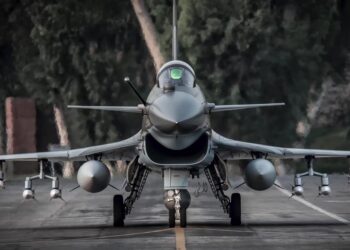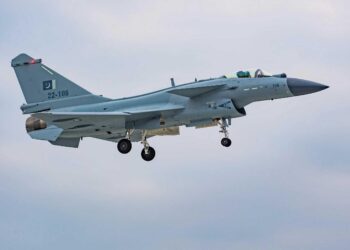LOS ANGELES: Warfare has changed, and the U.S. military must shift to meet the new threats, Deputy Defense Secretary William J. Lynn III said to the World Affairs Council here last night.
Lynn said he and Defense Secretary Robert M. Gates have tried to shift military strategy “to move the tectonic plates of our national security environment.”
The Defense Department is doing more to fight the wars in Iraq and Afghanistan while still preparing for future conflicts, Lynn said. Past strategy, he told the group, did not pay enough attention to current conflicts, and the department has changed the balance toward fighting today’s wars.
The biggest change in war is that rogue nations, terror groups and even criminal gangs can field increasingly lethal technologies, the deputy secretary told the audience.
“Terrorist organizations and rogue states seek weapons of mass destruction, insurgents are armed with [improvised explosive devices] that can penetrate even our most sophisticated armored vehicles,” he said. “We even see criminals who have world-class cyber capabilities.”
The military must be ready to face these challenges, he said, and still maintain the capabilities to take on peer competitors.
Another change is that wars, conflicts, emergencies are longer than they used to be, Lynn said. The old strategy was based on fighting two major, nearly simultaneous conflicts. But planners thought the wars would be like Operation Desert Storm in 1991 – a powerful, quick war.
“But the concept no longer fits our current reality,” Lynn said. “We are already fighting two wars, and it wasn’t the intensity of the initial combat phase that proved the most challenging in Iraq and Afghanistan. Rather, after eight years in those two conflicts, we are finding the duration of those conflicts is what places the most stress on American’s military. These wars have now lasted longer than the United States’ participation in World War I and World War II combined.”
War has moved more toward asymmetric threats. No nation or group can match the U.S. military’s conventional strength, Lynn said, so they don’t try.
“Rather than fighting us head-to-head, they use IEDs to counter our mechanized advantage or guerilla tactics to avoid direct combat,” he explained. Some countries also are investing in weapons such as surface-to-surface missiles, cyber capabilities and anti-satellite technologies to deny U.S. access to battlefields.
The cyber threat is another profound change in warfare, Lynn told the group.
“There is no exaggerating our nation’s dependence on information networks,” he said. The Defense Department alone has thousands of networks, millions of computers and more millions of computer users. All major weapons systems, the intelligence and logistics efforts and personnel programs rely on information technology.
“The Internet is magical in its ability to connect us to others,” Lynn said, “but it is a two-way street. Over the past 10 years, the frequency and sophistication of cyber intrusions has increased exponentially.” More than 100 foreign intelligence services are trying to hack into U.S. systems, he said, and foreign militaries are developing offensive cyber capabilities.
President Barack Obama has called the cyber threat one of the most serious challenges America faces, Lynn said. Cyber attacks threaten not only the U.S. military, but also the American infrastructure and economy, he added.
Lynn said the department is addressing all of these threats. The U.S. military is developing the capabilities to handle the range of conflict from low-end insurgencies to high-end near peer wars. The military services are adjusting the way they recruit, train and retain servicemembers in face of long wars. And the United States is working to counter asymmetric attacks and to continue to enhance asymmetric advantages of its own.
The way the Defense Department buys equipment, programs services also has to change, Lynn said, acknowledging that the department has not been a good buyer. Changing the way the acquisition process works is an important part of funding the capabilities to handle future threats, he added.
To illustrate his point, Lynn noted that Apple developed the iPhone in 24 months. “That’s less time than it would take for us to budget for an IT program,” he said. “I’m serious. Just to prepare, defend and receive congressional approval for our budget takes about 24 months.”
Overall, he added, it takes 81 months – nearly seven years — from an IT program first being funded until it becomes operational. This means the equipment already is four generations old by the time it gets in the hands of servicemembers.
Cancelling programs that don’t work, are redundant or are too specialized is another way to shape the budget, Lynn said. Gates has made the hard decisions, he told the group, and the programs he has cancelled or recommended for cancellation would have cost $330 billion if they continued.
“By exercising program discipline, we are able to direct resources to the highest priority programs,” Lynn said. “These tough decisions enhance our ability to protect the American people.”
The changing environment places great stress on the military and the department, the deputy secretary said. “Succeeding in these tumultuous times, while prevailing in Afghanistan and Iraq, will not be easy,” said he added. “But I’m confident that we have charted a path that will keep out nation safe.”









